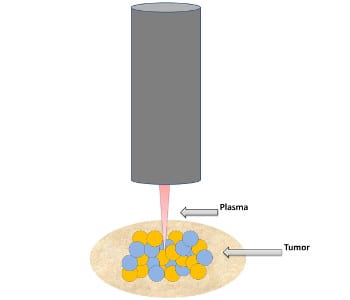 Plasma medicine is an emerging field of research that deals with the use of low temperature plasmas to affect biological systems ranging from single cells to tissues and organs. Plasma medicine research started about 20 years ago (mid 1990s) with a focus on the inactivation of microorganisms on biotic and abiotic surfaces. Applications ranged from sterilization of surfaces and liquids to disinfection of wounds and enhancement of wound healing. Today the field has branched out to several medical applications that may lead to a paradigm shift in the way various diseases can be treated. Of all the possible applications of plasma in medical therapy none is expected to have as much of an important scientific and societal impact as cancer treatment. For this reason, the elucidation of the effects of plasma on cancer cells is today the most exciting activity in plasma medicine research. Using various cancer cell lines, investigators have demonstrated that plasma kills the cancer cells in a selective manner, mostly sparing their healthy counterparts. It was also demonstrated that apoptosis, or programmed cell death, is one the cellular death pathways. In vivo work showed that plasma can reduce the size of cancerous tumors and that its effects are not only on the surface but are observed deep below the surface.
Plasma medicine is an emerging field of research that deals with the use of low temperature plasmas to affect biological systems ranging from single cells to tissues and organs. Plasma medicine research started about 20 years ago (mid 1990s) with a focus on the inactivation of microorganisms on biotic and abiotic surfaces. Applications ranged from sterilization of surfaces and liquids to disinfection of wounds and enhancement of wound healing. Today the field has branched out to several medical applications that may lead to a paradigm shift in the way various diseases can be treated. Of all the possible applications of plasma in medical therapy none is expected to have as much of an important scientific and societal impact as cancer treatment. For this reason, the elucidation of the effects of plasma on cancer cells is today the most exciting activity in plasma medicine research. Using various cancer cell lines, investigators have demonstrated that plasma kills the cancer cells in a selective manner, mostly sparing their healthy counterparts. It was also demonstrated that apoptosis, or programmed cell death, is one the cellular death pathways. In vivo work showed that plasma can reduce the size of cancerous tumors and that its effects are not only on the surface but are observed deep below the surface.
Because of the advances outlined above, Plasma Processes and Polymers took the initiative of publishing the first journal special issue that focuses on the application of low temperature plasma to cancer. This special issue is guest edited by Prof. Mounir Laroussi, Old Dominion University, and Prof. Michael Keidar, George Washington University, two recognized leaders of plasma medicine research and plasma-cancer applications. The special issue consists of excellent contributions from groups from around the globe and provides the reader with an appreciation of where this relatively young field is at today and where it could be heading in the future.

















